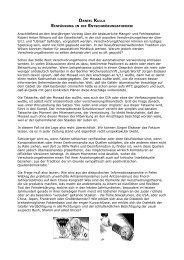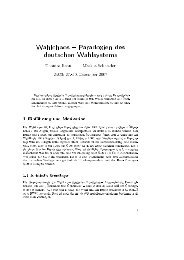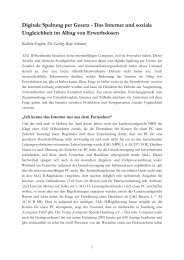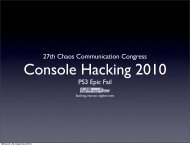Complete Hard Disk Encryption Using FreeBSD's GEOM Framework
Complete Hard Disk Encryption Using FreeBSD's GEOM Framework
Complete Hard Disk Encryption Using FreeBSD's GEOM Framework
You also want an ePaper? Increase the reach of your titles
YUMPU automatically turns print PDFs into web optimized ePapers that Google loves.
1 Background & motivation<br />
As more and more data enters the digital world, appropriate measures must be taken in<br />
order to protect it.<br />
Considering the everincreasing number of networked devices and the inherent<br />
exponential growth of the Internet, it is imperative that a large amount of effort go into<br />
securing devices against remote attacks. Common technologies and techniques include<br />
firewalls, intrusion detection systems (IDS), encryption of all kinds of network<br />
transmissions as well as hardening network stacks and fixing buffer overflows.<br />
At the same time, we are witnessing increasingly sophisticated and complex mobile<br />
devices such as PDAs, smartphones and cell phones becoming pervasive and assuming<br />
all kinds of important tasks. Between the generalpurpose laptop and the (once) specialpurpose<br />
cell phone, pretty much anything in between is available.<br />
As people use these devices, they also generate data – either explicitly or implicitly.<br />
Explicitly stored data might for example include: entering a meeting into the electronic<br />
schedule, storing a telephone number and associating a name with it, or saving an email<br />
message draft in order to finish it later.<br />
But then there is also the data which is stored implicitly. Examples include the<br />
history of the telephone numbers called or received, browser caches, recently accessed<br />
files, silently by the software archived or backedup data such as email messages, log<br />
files and so on.<br />
Even if the user remembers to delete the explicitly stored files after they are no longer<br />
needed, it is possible to trace a lot of his or her activity on the device by looking at the<br />
aforementioned, implicitly stored data. The more sophisticated the device is, the more<br />
such data will usually be generated, mostly without the user's knowledge.<br />
In terms of performance, laptop computers hardly lag behind their desktop<br />
counterparts – enabling them to run the same powerful and complex software. It also<br />
means that the users tend to generate far more data – both explicitly and implicitly –<br />
than on simpler devices.<br />
In addition to being exposed to remote attacks, laptop users are also faced with an<br />
increased exposure of the machine itself. While stationary computers are physically<br />
accessible by usually only a limited number of people, a laptop computer is intended to<br />
be used anywhere and anytime.<br />
This paper does not try to provide any solutions to mitigating the risks of remote<br />
attacks. Instead, it concentrates on the risks posed by attackers with physical access to<br />
the device. An attacker with physical access to a machine can either:<br />
• boot his own operating system, thus circumventing restrictions such as login<br />
procedures, filesystem and network access control and sandboxes<br />
• or remove the hard disk from the targeted machine and install it in a system<br />
which is under the control of the attacker – in case the target's booting<br />
sequence is protected (e.g. by a BIOS password)<br />
Unfortunately, most people and companies take quite lax an approach when it comes to<br />
protecting their data instorage, while the machine is turned off. The following quotes<br />
illustrate just how serious a problem the lack of instorage encryption can become:<br />
• „Thieves stole computer equipment from Fort Carson containing soldiers'<br />
Social Security numbers and other personal records, the Army said ...” [Sarche,<br />
2005]<br />
• „Personal devices "are carrying incredibly sensitive information," said Joel<br />
2
















